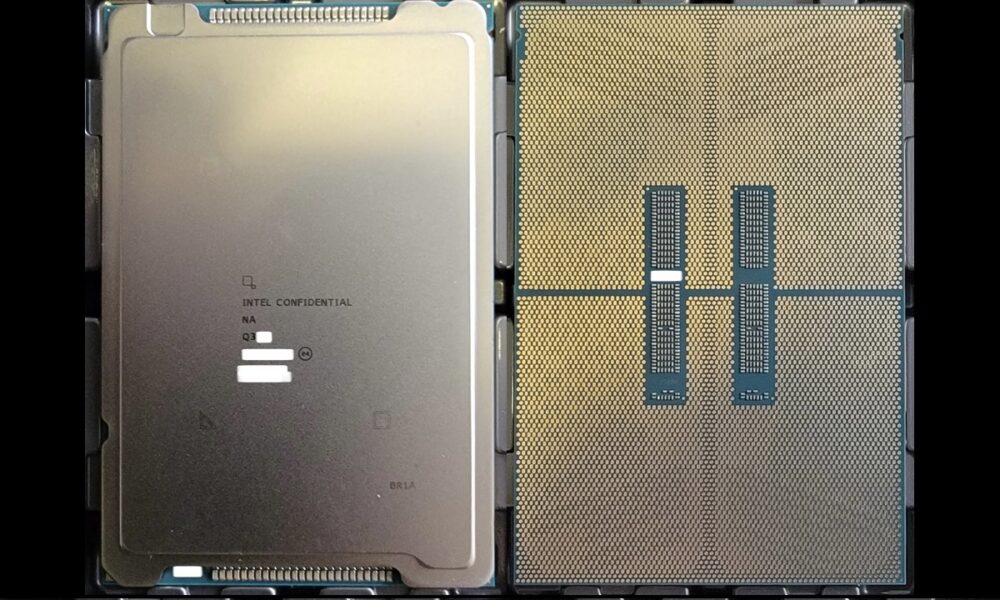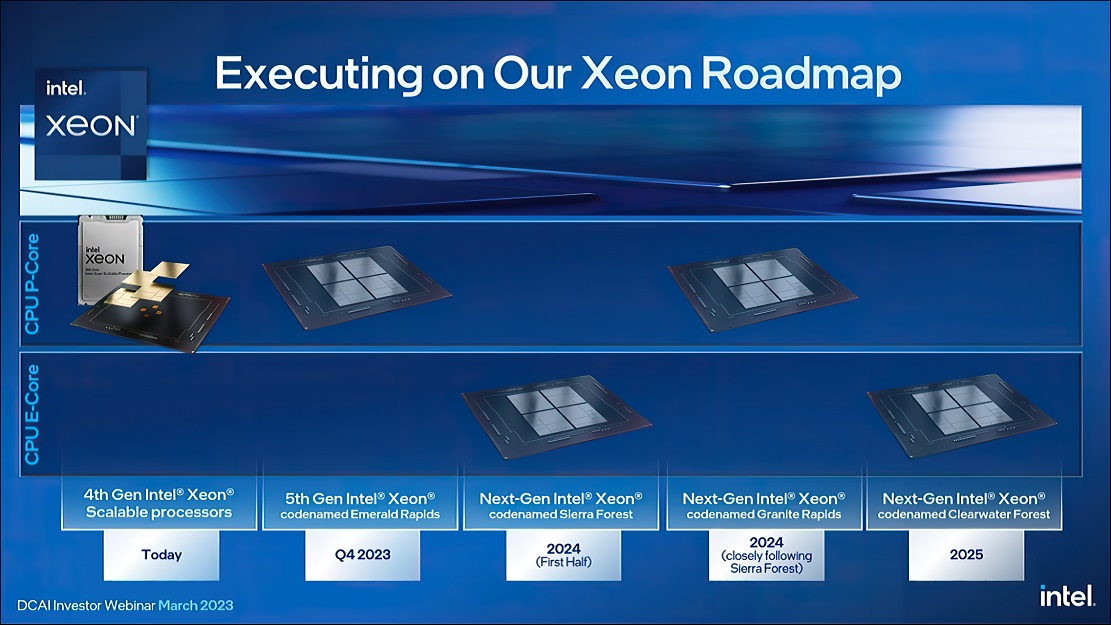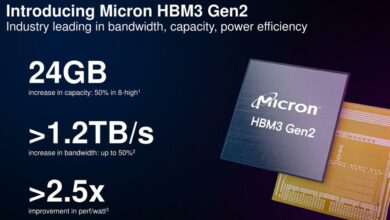
Thanks to a leak, we have been able to see an image of an Intel Granite Rapids processor, a generation that, as many of our readers will know, will be the successor to Emerald Rapids, which in turn will be the successor to the current Sapphire Rapids. The size of these new chips will remain enormous, and they will follow a sharply rectangular pattern.
The contact system with the motherboard will not change, but we will have new socket, since these processors will use the LGA7529, and not the LGA4677 used by Sapphire Rapids. It seems that the development of these new processors is very advanced, because the chip giant has already begun to send some units to certain customers so that they can start testing them.
We know that the Intel Granite Rapids will be based on the node Intel 3which will mean a major leap from Intel node 7 used by the Sapphire Rapids. This will allow a very big advance in transistor density, and also in terms of performance and energy efficiency.
According to the first information we have seen, these new processors will be available in configurations of up to 60 cores high perfomance. Those nuclei will be based on the redwood cove architecture, which is the same that Intel will use in Meteor Lake for general consumption. This means that there will also be a notable jump at the IPC level over the previous generation, and each core will be able to handle one process and one thread, which would translate into a maximum of 120 threads.
Intel Granite Rapids will once again use a MCM design with different blocks, and will be compatible with the latest industry standards, including PCIe Gen5 and CXL 2.0. As it happened with the current generation, Intel will also integrate different specialized accelerators to improve performance in specific tasks. The version with 60 cores and 120 threads could have a TDP of 500 watts.
The launch of this new generation of high-performance processors for servers and data centers will take place in 2024shortly after the arrival of Intel Sierra Forest, according to the latest information we have. I remind you that Sierra Forest will be a generation of processors that will prioritize core count and the parallelization capacity on the raw performance in single thread.
We know that Sierra Forest will use the Crestmont architecture, which is the same as what we will find in Meteor Lake’s high-efficiency cores, which will also be built on Intel’s 3nm node and will have a maximum count of up to 144 cores.




